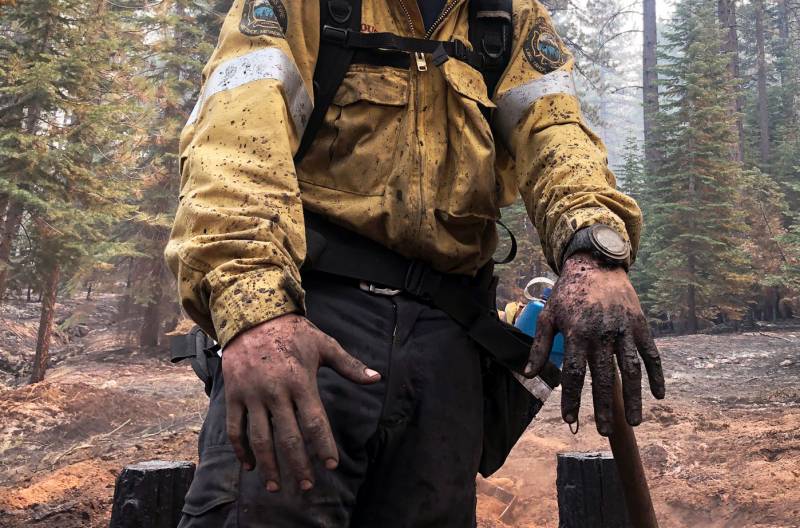Battalion chiefs and captains get nervous when the firefighting is so relentless and when crews hop from one fire to the next without enough rest. That’s when mistakes and injuries happen.
"Whether you've been here for the duration of this incident or you came from another fire ... fatigue can and will set in," Cal Fire safety officer Jamal Cook told crews in a Wednesday morning briefing on the Caldor Fire. "We all know we still have a long grind ahead of us and we can't stress enough how important it is to pace yourselves."
Avila gives regular pep talks and watches his firefighters closely, looking for signs of exhaustion.
"It’s very hard labor. If there is any fatigue, we'll set them aside and get him some rest or whatever he needs," Avila said. "You know, we don't run them. We don't run our guys down."
The longtime firefighters say this year feels different. The fires seem unstoppable with the usual methods, because the vegetation is so dry and ready to burn. That means they count each structure they can save as a small victory.
Dean Cordrey, a bulldozer operator working the Caldor Fire near South Lake Tahoe, would like to think he played a role in saving some of them.
"Sometimes I sleep out on the line. Sometimes I go get a hotel room. Sometimes I find a safe place to sleep, set out a sleeping bag, go to sleep," he said. "I can conk right out."
For him, the hardest part is being away from his wife and his ranch in the Carmel Valley. But he’s proud to help save people’s homes. He hopes someone would do the same for him.
KQED's David Marks contributed to this story.
